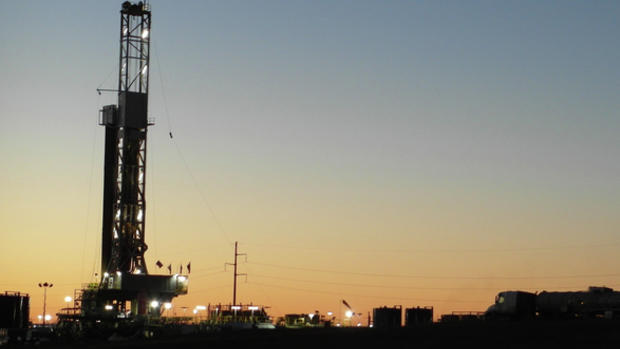There Was Never a Bust: North Dakota’s Oil Industry Is More Efficient, More Resilient Than Ever Before

Crews work at an oil well site near Williston, N.D., on Wednesday, Oct. 12, 2016. Amy Dalrymple/Forum News Service
“A Shale-Oil Boomtown Climbs Back From the Bust”
That was a headline from the Wall Street Journal over the weekend. It was an article, focused on Watford City in McKenzie County, describing about oil jobs and oil activity rebounding.
The rebound is very good news, and a story worth telling, but I take issue with describing the last couple of years as a “bust.”
For one thing, daily oil production has remained remarkably stable. From the state’s all-time record of daily production, set in December 2014, through March of this year production is only down about 16.4 percent.
Drilling activity was down much more sharply, of course, and it’s that activity which really drives the oil industry’s economic impacts. Yet even at rock bottom North Dakota still had dozens of oil rigs operating, and the trend in recent months is an uptick in drilling activity:
We have other indications that there was never really a bust, too. The investment in the Dakota Access Pipeline, as one example. Energy Transfer Partners invested billions in completing that project, and it’s paying major dividends for the state, nearly eliminating the discounts oil producers had to deal with because of the expense of transporting Bakken crude out of the state. “A producer in the Williston Basin, who did not wish to be identified, said Thursday start-up of Dakota Access will result in higher netbacks,” Hellenic Shipping News reported recently. “In 2014, the company had to sell its crude oil at a discount of about $9.6/b to the WTI. That narrowed last year to $4.13/b and today its $2.96/b, it said.”
That’s a big reduction in expense. To put it in perspective, in March the state 1.02 million barrels per day, meaning that reduction in discount is worth about $6.8 million per day were it applied to every barrel produced in the state.
That’s a really big deal.
Also a big deal is the on-going innovation in the Bakken oil fields. Innovation driven in no small part by producers working to come to grips with lower prices.
Amy Dalrymple, writing for the Bismarck Tribune, has an article about new technology allowing oil wells drilled at the beginning of the oil boom to be re-fracked to boost their output. “More than 140 wells in the Bakken have been refractured, and most saw an increase in oil production from 200,000 to 250,000 barrels,” she reports, based on numbers from ND Pipeline Authority director Justin Kringstad.
That’s also a big deal.
Various factions of the public, for reasons having to do with ideologies and political zealotry, have been rooting for the demise of North Dakota’s oil industry.
Fortunately for everyone else, that demise does not seem to be in the offing. If anything, North Dakota’s oil industry is going to emerge from this recent downturn more resilient and more efficient than before.





